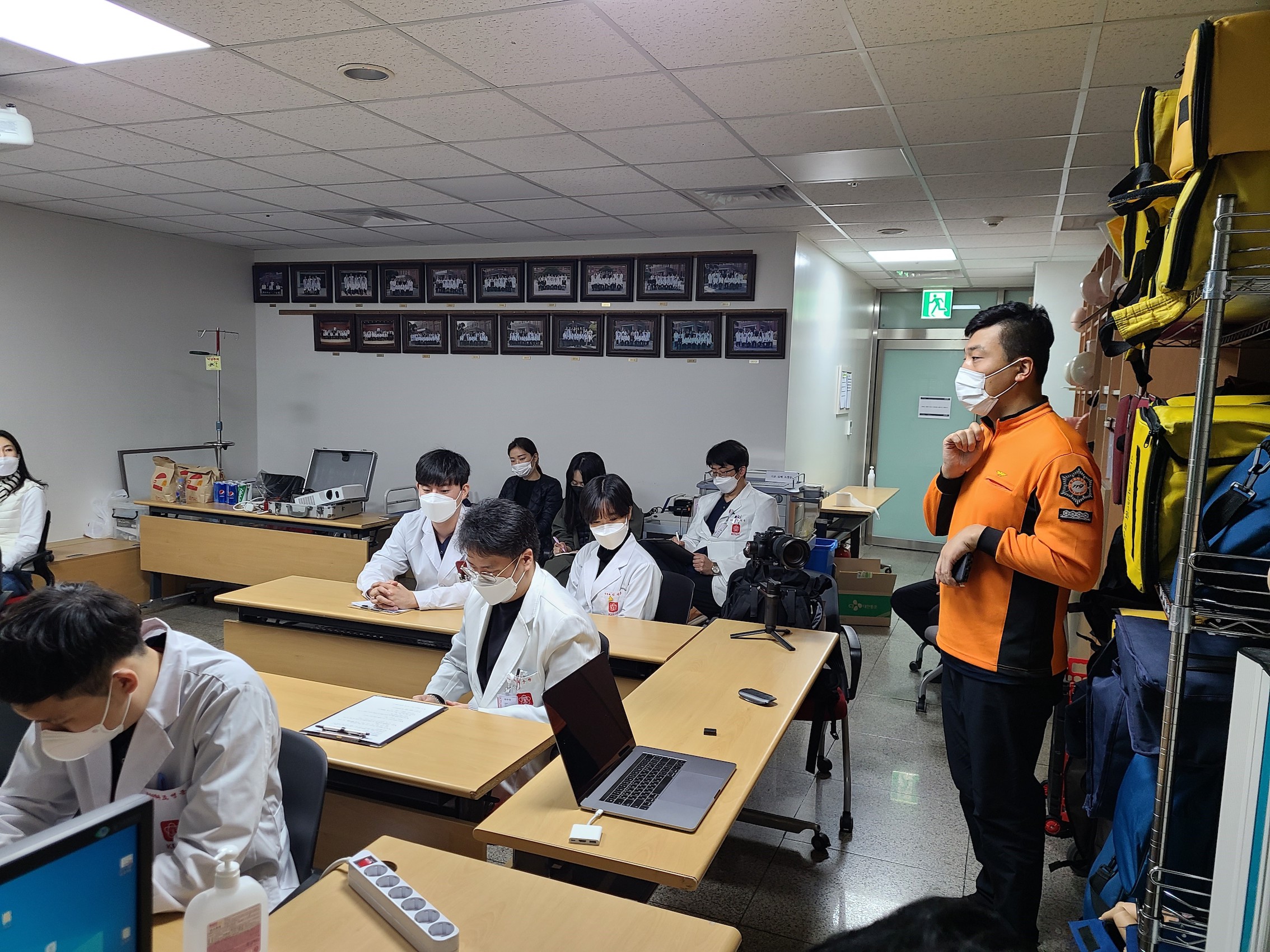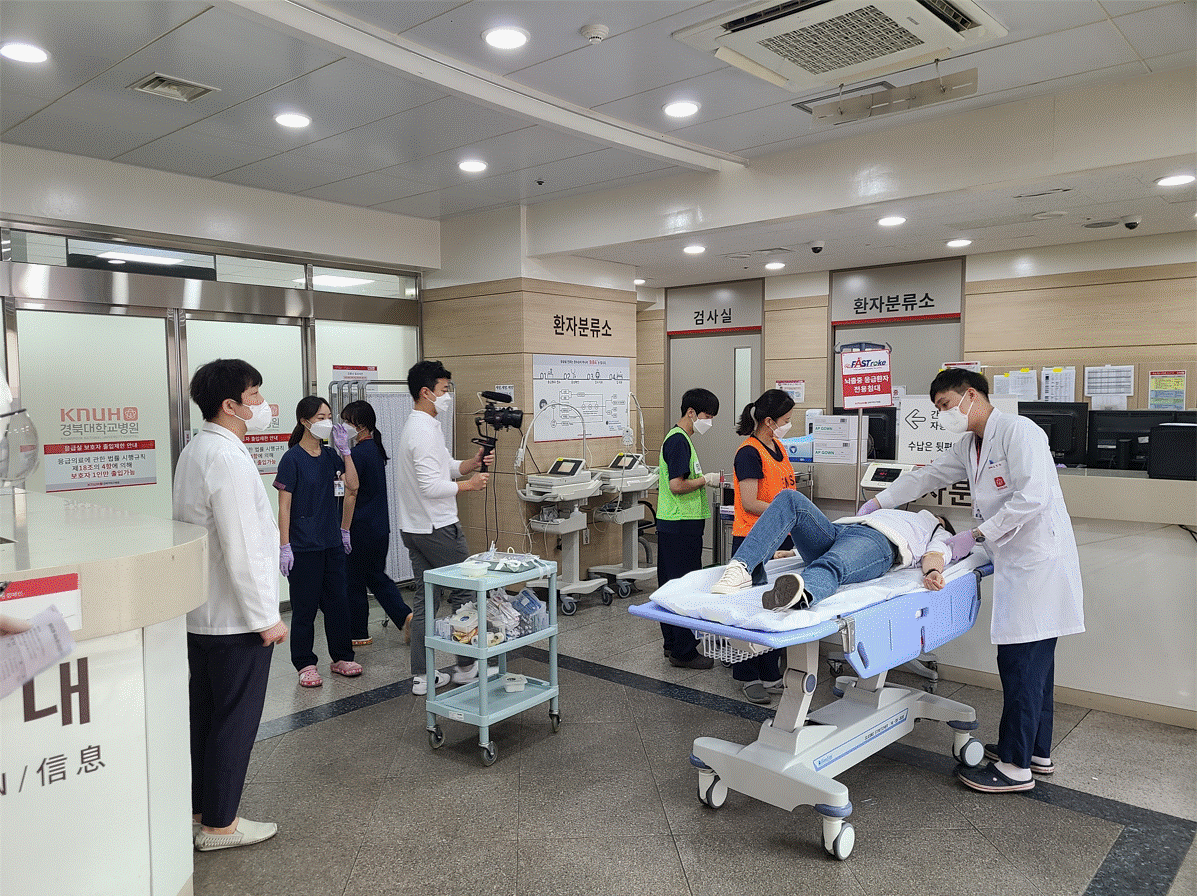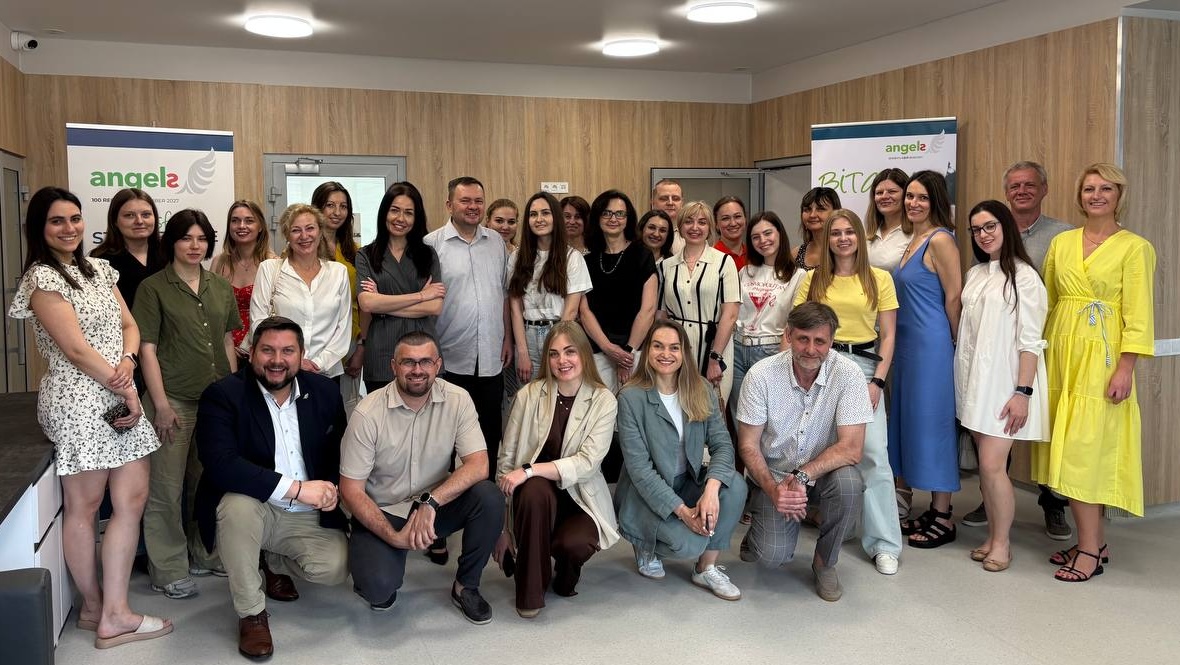Bệnh nhân đột quỵ ở Hàn Quốc sẽ là người hưởng lợi từ một loạt các hội thảo mô phỏng khớp mang tính bước ngoặt để tối ưu hóa lộ trình trước khi nhập viện và giảm sự chậm trễ trong điều trị.

Trong một khán phòng tại Bệnh viện Đại học Quốc gia Chungbuk vào thứ Năm ngày 18 tháng 11, một người phụ nữ ngã và lăn sang một bên nơi cô nằm, rên rỉ nhẹ nhàng. Một người bạn vội vã đi về phía cô ấy. Xe cứu thương được triệu tập và sau sáu phút giúp đỡ đến, bệnh nhân được buộc vào một chiếc cáng và đặt ở một vị trí cách nơi cô ngã vài mét.
Hiện có một số manh mối cho thấy đây không phải là trường hợp khẩn cấp thông thường. Bệnh nhân, bạn của cô và bộ ba đến viện trợ đều mặc đồng phục màu cam và đen nổi bật của Sở Cứu hỏa Hàn Quốc, và khoảng hai chục người khác trong phòng đang điều khiển bàn di động và ghi chú khi hành động diễn ra.
Vì mọi người mặc đồ màu cam đều biết bên trong xe cứu thương như phía sau bàn tay của họ, nên không cần nỗ lực để tưởng tượng rằng họ đang đi dọc theo những con phố nhộn nhịp của Cheongju, thủ phủ của tỉnh Bắc Chungcheong của Nam Triều Tiên, hoặc một sân khấu nổi lên bên dưới màn hình khổng lồ với hình ảnh cận cảnh khung đỡ của máy chụp CT đại diện cho điểm đến của họ, phòng Phòng cấp cứu của bệnh viện.
Những gì bạn đang chứng kiến chỉ là hội thảo mô phỏng chung lần thứ hai liên quan đến một bệnh viện sẵn sàng cho đột quỵ và một nhóm 119 nhân viên từ đội cứu hỏa và dịch vụ xe cứu thương của Hàn Quốc.
Được điều hành bởi Cơ quan Quản lý Khẩn cấp Quốc gia (NEMA), các dịch vụ xe cứu thương ở Hàn Quốc là chuyên nghiệp, được tổ chức tốt và được cung cấp miễn phí. Nhưng cũng như các dịch vụ cấp cứu ở hầu hết các quốc gia trên thế giới, việc thiếu sự phối hợp giữa xe cứu thương và bệnh viện cũng ảnh hưởng tiêu cực đến thời gian bắt đầu điều trị và cuối cùng là kết quả của bệnh nhân trong các trường hợp cấp cứu y tế như đột quỵ.
Vì lý do này, nhóm Sáng kiến Angels tại Hàn Quốc và bốn bệnh viện tham gia đã kiến nghị NEMA bật đèn xanh cho một loạt các hội thảo mô phỏng chung mang tính bước ngoặt để tối ưu hóa lộ trình trước khi nhập viện cho bệnh nhân đột quỵ.

Bước đầu tiên luôn là bước khó khăn nhất, theo phản ánh của Sungsin Park, Giám đốc Chương trình Angels tại Hàn Quốc, người mà loạt mô phỏng EMS chung được thực hiện trong năm 2021 đánh dấu sự khởi đầu của một chiến dịch mở rộng nhằm giảm thời gian bắt đầu đến tận nhà và đến tận nhà.
Đào tạo mô phỏng là một công cụ có giá trị để tối ưu hóa lộ trình đột quỵ. Nó làm giảm sự chậm trễ trong điều trị và cải thiện hiệu quả bằng cách xác định các tắc nghẽn trong các bệnh viện tham gia, đặt nền tảng cho một kế hoạch hành động đa ngành được hai bên thống nhất để thực hiện các giải pháp và nuôi dưỡng tư duy chất lượng.
Tuy nhiên, dù các nhóm bệnh viện và tiền viện cần mẫn là về việc hợp lý hóa các con đường tương ứng của họ, đó là ở giao diện giữa bệnh viện và EMS, nơi có thể lưu lại những phút quý giá, với những hậu quả sâu rộng cho bệnh nhân đột quỵ.
Sự hợp tác của một cơ quan chính phủ ở Hàn Quốc với các bệnh viện và Sáng kiến Thiên thần là một sự phát triển đột phá và là kết quả của việc lập kế hoạch và truyền thông rộng rãi. Mô phỏng chung đầu tiên diễn ra tại tỉnh Changwon Gyeongnam, tại Bệnh viện Yonsei S, một trong những bệnh viện chuyên về chăm sóc đột quỵ, vào ngày 26 tháng 7. Thành công của nó đã mở đường cho ba mô phỏng nữa - tại Bệnh viện Đại học Quốc gia Chungbuk ở Cheongju ở tỉnh Bắc Chungcheong, Bệnh viện Đại học Quốc gia Kyungpook ở Thành phố Thủ đô Daegu và tại Bệnh viện Đại học Quốc gia Kangwon ở Chuncheon ở tỉnh Gangwon.
Đối với Sungsin và nhóm của mình, dự án đã đánh dấu một đường cong học tập dốc nhưng cuối cùng là thỏa mãn. Các kịch bản được phát triển tại Trung tâm Mô phỏng Đột quỵ ở Brno ở Cộng hòa Séc và thích nghi với các điều kiện địa phương. Những người tham gia được tóm tắt kỹ lưỡng về các mục tiêu đào tạo, vai trò được chỉ định của họ và thông tin bệnh nhân. Và để thực hiện hành động khắc phục đã thỏa thuận trong quá trình phỏng vấn, các mô phỏng đã được lặp lại.
Thành viên nhóm Angels và điều phối viên mô phỏng, JuWan Kim, đã đăng ký tham gia đào tạo về quay video và chỉnh sửa video, để tạo ra các clip là một công cụ hỗ trợ quan trọng trong việc đánh giá hiệu suất và thúc đẩy các cuộc thảo luận nhóm. Các đoạn phim do JuWan sản xuất rất tốt, giờ đây chúng sẽ trở thành hướng dẫn thực địa để hỗ trợ đào tạo trong hệ thống tiền viện khu vực.
Mô phỏng tại Bệnh viện Đại học Quốc gia Kyungpook bắt đầu bằng xe cứu thương, trong đó 119 nhân viên nhanh chóng làm việc để đánh giá bệnh nhân trong khi lấy thông tin từ một thành viên trong gia đình. Bệnh viện được thông báo trước và khi xe cứu thương đến nơi, một điều dưỡng và bác sĩ ER gặp họ ở lối vào. Bệnh nhân được đưa trực tiếp đến phòng chụp CT, trước khi được đưa đến khoa cấp cứu để điều trị.
“Rất nhiều cánh cửa”, bác sĩ đột quỵ nhận xét khi xem lại cảnh quay. Đây là một trong những rào cản theo nghĩa đen mà bệnh viện này sẽ giải quyết trong kế hoạch hành động của họ.
Các mô phỏng cho thấy một số cơ hội để cải thiện, Sungsin nói. “Các thông báo trước không được sử dụng đúng cách. Các bác sĩ và y tá lặp lại các đánh giá thần kinh tương tự. Đã dành quá nhiều thời gian để lấy sự đồng ý của bệnh nhân và với tư cách là một nhóm, họ không chia sẻ tất cả thông tin liên quan với nhau. Các quy trình khác nhau giữa các bệnh viện, cho thấy sự cần thiết phải chuẩn hóa các quy trình.”
Tuy nhiên, có một điều rất nhất quán trong cả bốn video mô phỏng – trong mọi trường hợp, ý thức về sứ mệnh là trên không trung, khi người tham gia cống hiến hết mình trong nhiệm vụ. Đào tạo thêm có thể giúp định hình con đường và cung cấp cho nhiều bệnh nhân đột quỵ cơ hội thứ hai trong cuộc sống, nhưng cam kết cảm xúc từ các nhóm ở cả hai bên của những cửa bệnh viện này, là điều bạn không thể mô phỏng.



